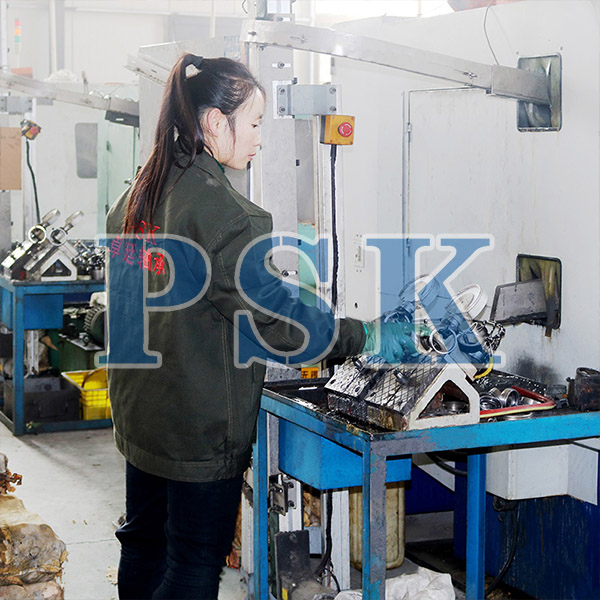Factors for the selection of outer spherical bearings with seat
1. Selection of motor bearing specifications
According to the application of mechanical equipment and design plan service life. When choosing a bearing, we should deliberately increase the fatigue service life index. This not only requires choosing a large bearing, which is not economical to expand, but also the compressive strength, stiffness, and installation specifications of the shaft are usually not necessarily the basic fatigue service life. Bearings used in a variety of mechanical equipment have standard design scheme service life based on application standards, expressed as work experience exhaustion service life index.
2. Selection of bearing accuracy
In ordinary industrial consumer machines, you can consider its application rules if you choose P6 or even P0 accuracy. Bearing accuracy key refers to specification accuracy and rotation accuracy. The standard reference requested different accuracy levels and dimensional tolerances and dimensional tolerance values of key specifications. Bearing accuracy is divided into five levels, P0, P6, P5, P4, and P2, which have been improved. .
The accuracy of the flip bearing is understood in accordance with the standard tolerance and rotation accuracy. Standard tolerances include the dimensional tolerances of the bearing's nominal diameter, diameter, total width, and total assembly width; the dimensional tolerance rule value of the rounded corner specification and the dimensional tolerance value of the total width are different.
Rotation accuracy factors include the dimensional tolerance values of the inner ring and the outer axial trembling; the dimensional tolerance values of the inner ring and the outer radial tremor; the dimensional tolerance values of the inner ring and the side trembling; the dimensional tolerance value of the outer diameter surface tilt .
3. Adopting standard for matching of flip bearing
The case where the outer spherical bearing ring with seat is relative to the load. For ferrules whose relativity is rotating or shaking with respect to the load orientation, clearance fit or engagement fit should be selected. For ferrules that are relatively fixed with respect to the load position, gap fit should be selected. When the inseparable bearing is used as the movable support plate, the ring whose relative to the load position is fixed is used as the swing ring, and the gap fit or the joint fit is selected.
The type and size of the load. When subjected to shock load or heavy load, generally should choose the more dense and inseparable coordination than everything is normal and light load. The radial bearing load size is divided by the ratio of the axial equivalent dynamic load Pr to the axial rated dynamic load Cr. The greater the load, the greater the clearance fit.
light load Pr/Cr is not more than 0.06; all normal load Pr/Cr exceeds 0.06 and is lower than 0.13;
Heavy load Pr/Cr exceeds 0.13.
Bearing specifications are accompanied by the expansion of bearing specifications. The larger the selected clearance fit, the larger the clearance fit.
It is necessary to check whether the bearing clearance after installation is not considering the application rules, so as to facilitate the proper selection of fit and bearing clearance.
Other elements harm the raw materials, compressive strength and heat transfer performance of the shaft and the bearing seat; the heat transfer method and amount of heat generated by the outside and the heat formed in the bearing, the support plate installation and conditioning characteristics, etc. are all hazardous coordination options.
4, the choice of bearing clearance
To put it plainly, the internal clearance of the bearing means that when the bearing is not installed on the shaft or the bearing box, one of the inner ring or the outer side is fixed in place, and then the unfixed side is fixed in the axial, radial or The amount of movement during angular movement. According to the moving position, the axial clearance, radial and angular clearance can be divided.
Due to the bearing fit and the temperature difference between the inner and outer rings during operation, the outer spherical bearing with a seat generally has a smaller clearance than the previous period. From a basic theoretical point of view, when the bearing is in operation, there is a slight negative running clearance, so the use of the bearing Longer life. But maintaining this best clearance is very difficult. With the change of application standards, the negative clearance of the bearing will be relatively expanded, which may cause a significant reduction in the service life of the bearing or become hot. Therefore, the initial clearance of the bearing is generally listed as slightly larger than zero. The running clearance can be calculated from the initial clearance of the bearing and the amount of clearance reduction caused by the clearance fit, and the amount of clearance that is formed by the influence of foreign objects on the temperature difference.
The amount of clearance reduction caused by clearance fit. When the bearing is installed on the shaft or bearing box with static fit, the inner ring swells and the outer side is folded, which reduces the internal clearance of the bearing. The swelling or pressure strength of the inner ring or the outer side is different due to the bearing method, the appearance, specifications and raw materials of the shaft and the bearing box, which is about 70% to 90% of the clearance fit.
Will the improper selection of the outer spherical bearing a

